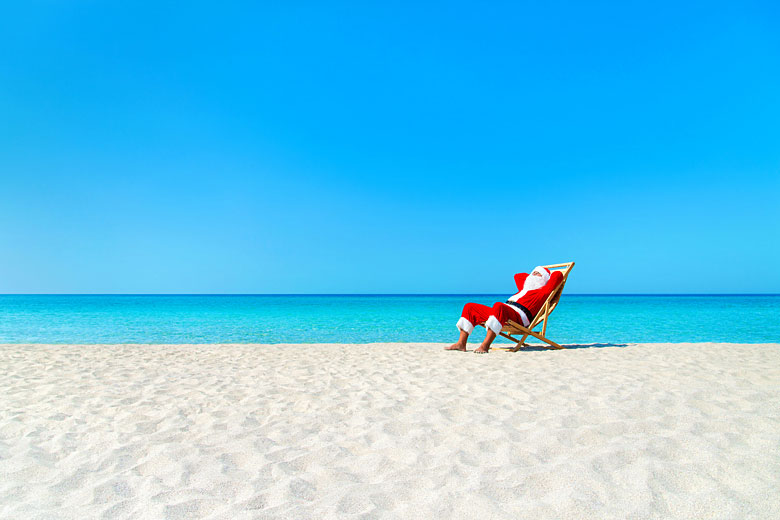- Explore latest sale offers on holidays in 2025/2026
- Filter deals by continent, star rating & holiday type
- Including Dubai, Caribbean, North America, Asia & Pacific
Best time to visit Argentina
Find the best time to visit Argentina and plan your perfect trip in 2024/2025. Get holiday inspiration, weather guides, travel advice and find great deals.
- Best time to visit
- Weather by month
- 5-day weather forecast
- Destinations
- Travel advice
- Deals & discounts
Argentina by month
Jan Feb Mar Apr May Jun Jul Aug Sep Oct Nov Dec
Recommended for Argentina
Top Argentina destinations
Below are the temperatures expected today at popular countries, regions and places in Argentina. Select a destination to compare today's forecast with average weather conditions.
All Argentina destinations
- Bahia Blanca
- Buenos Aires
- Comodoro Rivadavia
- Cordoba
- El Calafate
- Iguazu Falls
- Mar del Plata
- Mendoza
- Rosario
- Salta
- San Carlos de Bariloche
- San Miguel de Tucuman
- Ushuaia
When is the best time to visit Argentina?
The best time to visit Argentina (Buenos Aires) is February based on the following average weather conditions.
Maximum daytime temperature = 22 - 30°C [remove]
Daily hours of sunshine = 10 hours or more [remove]
Change the criteria to reflect your weather preferences.
Max Day Temperature (°C)
- Jan
 29
29 - Feb
 28
28 - Mar
 26
26 - Apr
 22
22 - May
 19
19 - Jun
 15
15 - Jul
 15
15 - Aug
 17
17 - Sep
 19
19 - Oct
 22
22 - Nov
 25
25 - Dec
 28
28
Which is the hottest month in Argentina?
The hottest time of year in Buenos Aires, Argentina is normally January. Expect maximum daytime temperatures to reach 29°C with moderate heat and humidity.
Which month has the most rain in Argentina?
In terms of rainfall, March is usually the wettest month in Buenos Aires, Argentina with 121mm on average. There are normally 8 days in March with some rain.
When is it sunniest in Argentina?
The sunniest time of year in Buenos Aires, Argentina is normally February with bright sunshine on average for 64% of daylight hours; that's 9 hours of sunshine per day.
When is the sea warmest in Argentina?
The sea is usually at its warmest in Buenos Aires, Argentina in January when the water temperature reaches 24°C.
Best time to visit
The weather guide for Argentina (Buenos Aires) shows long term weather averages processed from data supplied by CRU (University of East Anglia) & today's weather forecast provided by meteoblue. Find out more about our data sources.
Metric (°C / mm) | Imperial (°F / inches)
Argentina weather overview
This vast country, which is almost as large as India, has a varied topography and climate. Northernmost Argentina is tropical, which means high temperatures and high humidity in the summer months (November to March) and rain throughout the year.
Central Argentina, which includes Buenos Aires and the Pampas to the east, has a healthy and pleasant climate, which is warm but fairly rainy in the summer and mild in the winter.
Further west and to the south, the climate is sunny and drier and drought can occasionally be a problem. Western Argentina, including the northern Andes, is a dry region: even on the mountain peaks, which rise as high as 7,000 m (23,000 ft), rain and snowfall is low.
What rain there falls mainly during the summer months which are very sunny and hot. This climate makes the eastern slopes and foothills of the Andes very arid while the surrounding lowlands are desert.
Southern Argentina (also known as Patagonia) is largely dry but temperatures are cooler and the far south has chilly summers and long winters with plenty of frost and snow. However, the region's proximity to the Atlantic Ocean stops temperatures falling unbearably low.
What to pack for Argentina weather
Pack light cotton clothes for northern and western Argentina (unless going high up into the Andes) and for Central Argentina in their summer.
Take warmer wear for central districts in winter and summer visits to the south. Wrap up very warmly for the winter months in Southern Argentina. Even dry Western Argentina experiences some rain, so go prepared.
Argentina travel features
Do you want to learn more about Argentina? Read our latest features covering travel tips and insider destination guides on where to go and what to do in Argentina.
Be inspired
Get your weekly fix of holiday inspiration from some of the world's best travel writers plus save on your next trip with the latest exclusive offers
We promise not to share your details
Related posts
Popular travel offers
Explore holidays in the sun for less
- Beach holidays
- Family holidays
- City breaks
- Summer holidays
- Winter sun holidays
- Holiday offers
- Top travel brands
- Airlines & flights
- Discount hotels
- Airport parking deals
- TUI
- Jet2holidays
- easyJet holidays
- Love Holidays
- Black Friday sales
Airport parking
- Manchester Airport
- Stansted Airport
- Bristol Airport
- Luton Airport
- Birmingham Airport
- Edinburgh Airport
- Gatwick Airport
- Glasgow Airport
- Newcastle Airport
Airport lounges
- Manchester Airport
- Birmingham Airport
- Bristol Airport
- Edinburgh Airport
- Glasgow Airport
- Heathrow Airport
- Newcastle Airport
- Stansted Airport
- Gatwick Airport











 Holiday deal finder
Holiday deal finder


















